August marks the 150th birthday of naturalist and Antarctic explorer, William Speirs Bruce, who was born on 1 August, 1867.
Part of the Bruce archive is held in the library collections of National Museums Scotland, with other Bruce archive collections being held by the University of Edinburgh, and the University of Cambridge. You can browse the Archives Hub for various collections relating to William Speirs Bruce.
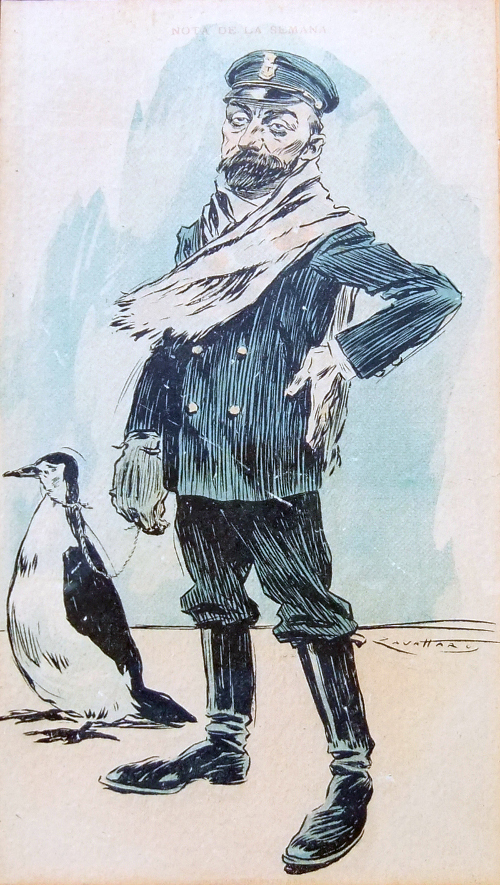
As a teenager, Bruce attended a vacation course in biology at a marine station in Granton, studying under Patrick Geddes, which proved to be an influential experience. He went on to assist John Murray at the Challenger Office, and would help with dredging on the Forth or Clyde whenever there was an opportunity.
Bruce’s first Antarctic voyage was on the Balaena where he worked as a surgeon on the Dundee Antarctic Whaling Expedition. He went on to work as a biologist on the Jackson-Harmsworth Expedition, and then on the Coates Arctic Expedition. Bruce was then invited to make hydrological and biological surveys on trips to Spitsbergen.
Bruce’s best known expedition was on the Scotia where he was the leader of the Scottish National Antarctic Expedition during 1902 to 1904. This expedition set out to conduct hydrographic work in the Weddell Sea, and survey the South Orkney Islands and study their wildlife.
Bruce continued to make expeditions, and travelled to Spitsbergen several more times between 1906 and 1919.
The archive at National Museums Scotland holds a range of records that show the breadth of Bruce’s work over the years.
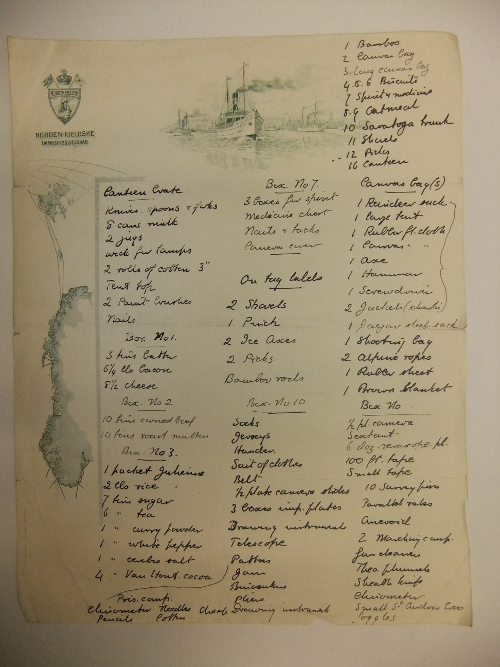
The planning that was required to undertake a scientific voyage is evident from the many records held for ordering goods to take on board, and packing lists for specific parts of a voyage. Lists include everything from basic requirements such as food, to survival equipment, to specialised scientific apparatus.
The archive includes scientific data gathered on Bruce’s voyages. There are examples of scientific log books, oceanographic measurements of temperature and water density, and lists of specimens found in trawls.
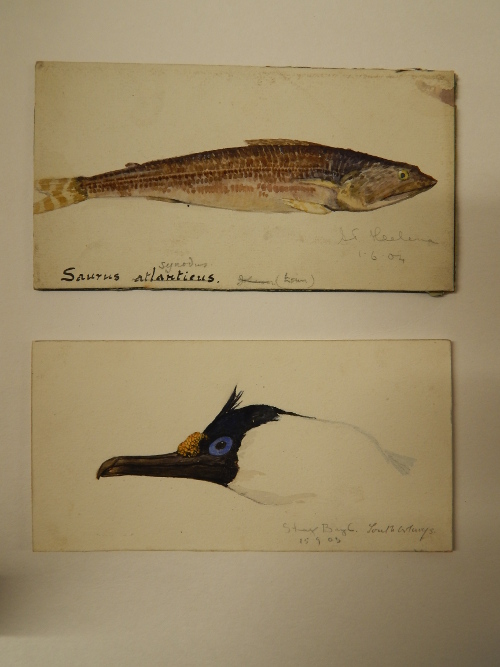
Scientific data is accompanied by scientific drawings and sketches of the flora and fauna collected and described as part of the expeditions. The artist of the Scotia was William Cuthbertson, and his artwork shows the array of wildlife that was observed by the scientific team.
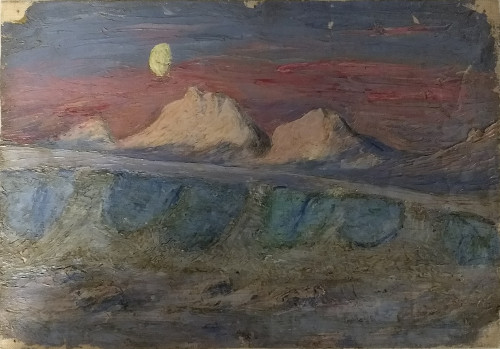
Cuthbertson also painted landscapes and seascapes as the crew travelled, and the archive has a collection of these, often showing the beauty of the environment that was encountered on the Scottish National Antarctic Expedition.
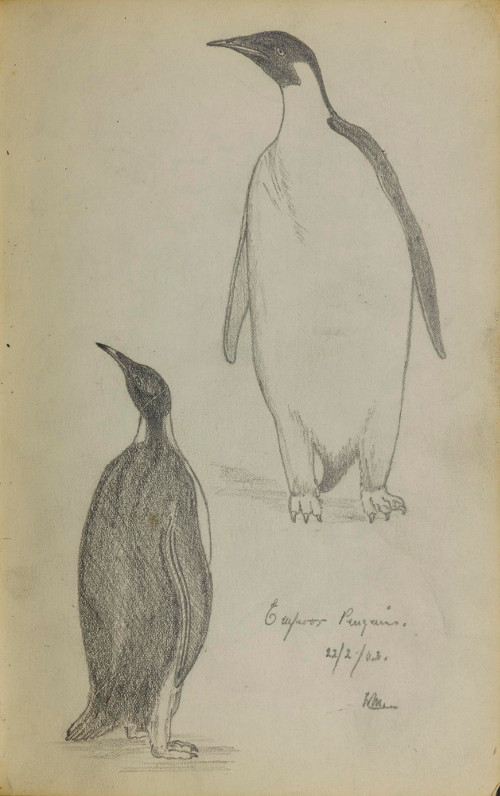
The archive includes many illustrations and descriptions of penguins, including this sketch by William Martin. Their behaviour was noted by Bruce and his colleagues during the Scotia expedition, and specimens were collected for scientific study. Some of these specimens are part of the collections at National Museums Scotland, and still available for study. However, penguins and their eggs were also valued as food for the voyage, with black throated penguins being found the most palatable. Penguin was regularly served with fried onions, in soup, or as curry to those on board the Scotia.
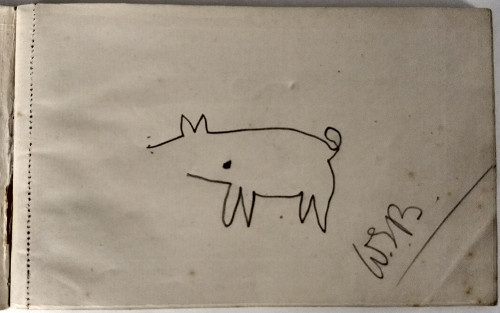
Despite the amount of scientific work undertaken during expeditions, Bruce and his colleagues did have leisure time to fill. Time would be spent singing songs, with each person doing a turn to entertain, Bruce being known for his rendition of ‘Two Blue Bottles’. The archive collection contains a notebook filled with attempts to draw a pig while blindfolded, which serves as a keepsake from the voyage, as well as evidence of the kind of games that would keep boredom at bay. The page shown is William Speirs Bruce’s attempt.
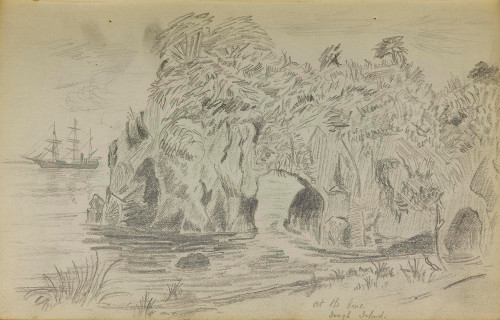
The landscapes and living conditions experienced by those on the Scottish National Antarctic Expedition were captured by William Martin in a sketchbook that is also held in the National Museums Scotland archive. The sketch shown is of a cove at Gough Island where the Scotia stopped to collect specimens, and more images from the sketchbook can be found online http://www.nms.ac.uk/explore/collection-search-results/?item_id=737692
The Bruce papers also contain the diary of A Forbes Mackay who was a colleague of Bruce. Mackay reached the South Magnetic Pole on January 16th 1909, along with T.W. Edgeworth David, and Douglas Mawson. The diary tells of the difficult conditions as the men made the journey on foot over challenging terrain. Mackay also describes the pressure put on their relationships as a team, as the leadership passed from David to Mawson because David was no longer considered capable of leading.
You can find more about the archive collections at National Museums Scotland by visiting our webpage where you can access our library catalogue and archive listings. http://www.nms.ac.uk/collections-research/research-facilities/museum-libraries/research-library/
Georgia Rogers
National Museums Scotland Library
Related:
Explore the William Speirs Bruce papers on the Archives Hub.
Browse the National Museums Scotland Library collections on the Archives Hub.
All images copyright the National Museums Scotland Library and reproduced with the kind permission of the copyright holder.
Save

Thank you for the information above, I now have another place on my ‘must visit’ for Edinburgh. I love that cartoon image of William Spiers Bruce – that’s what drew me to the article. Many thanks!